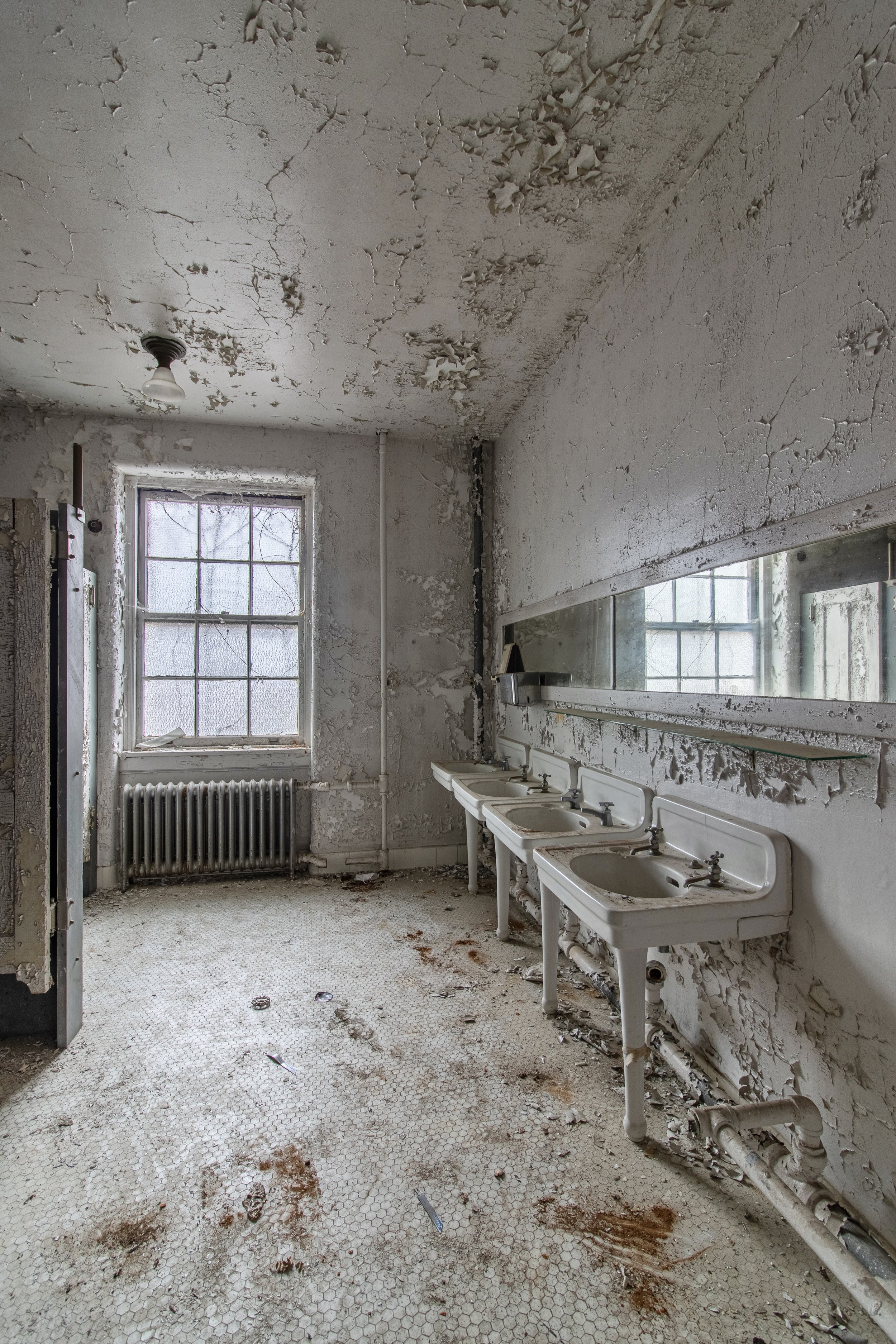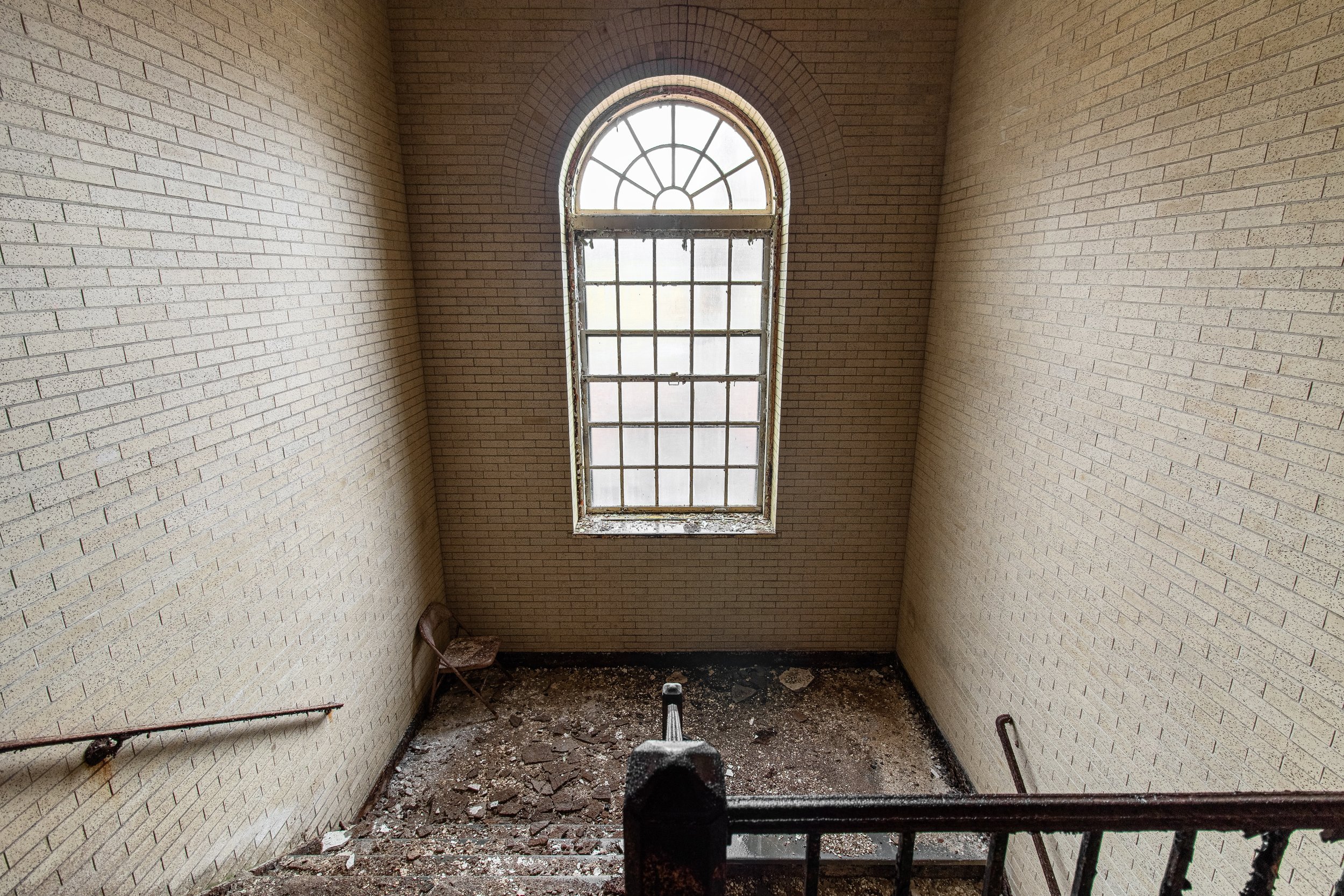The Letchworth Village Developmental Center in Haverstraw, New York, was an institution specializing in treatment for the mentally and physically disabled. Letchworth opened in 1911, and sat on 2000 acres, with room to expand accordingly. The facility was built under the “cottage plan” where there were multiple sections of the campus separating boys, girls, and adult men, and woman. The campus was built with Neoclassic stone buildings that included dormitories, kitchens/ dining halls, a small medical building, a synagogue, staff dormitories, administrative buildings, auditoriums, a campus power plant along with many warehouses, and other buildings used for different recreations and functionalities. Patients would live in small, seperated cottage buildings, and would be taken by staff members around campus for outdoor activities, and to any other buildings that they needed to be taken to, such as community events (church services, performances, etc), or for medical procedures. The location chosen for the construction of Letchworth Village was a 2000 acre wooded, countryside property where the option for an outdoor community-feel would be necessary for Letchworth’s functionalities. By 1935, Letchworth reached its maximum patient capacity of 3000 patients, and soon led to overcrowding. In the 1940’s, Irving Haberman, a journalist exposed the Letchworth Facility for their terrible conditions. It was seen that residents often were left dirty, and abandoned due to overcrowding, and not enough staff. Some of patients at Letchworth also became subject to scientific tests, and the first polio vaccine created was tested on patients of the facility against their will. Around 20 patients were injected, and very few showed signs of the development of antibodies to polio. In 1969, a newer medical facility was built on the property near the girls group, which served for more medical space with a more modern use. Years ahead, the state of New York became aware of the serious problems within the Letchworth Village Developmental Center, and the start of deinstitutionalization began. By 1996, Letchworth Village was shut down for good, and the patients were moved to group homes, and other mental health facilities. Soon after closure, the town of Haverstraw, and Stony Point purchased different parts of the land. The majority of the girls’ group was renovated for the Fieldstone Middle School. A few of buildings of the adult male group were renovated for uses such as the Stony Point Justice Court, and the Cornell Cooperative Extension of Rockland County. And “Kirkbride Hall,” the main auditorium & gym for the Letchworth located by the adult male group continued to be used for town events. On top of this, a huge percentage of the property opened as the Philip J. Rotella and Patriot Hills golf courses. Despite these changes, and much of the property opening to the public, the vast majority of the buildings have been sitting abandoned, and decaying since Letchworth’s closure and they remain off limits for inside access. It didn’t take long for the abandoned buildings at Letchworth to intrigue many people who became curious to see what time has done to these buildings full of intense history. In 2011, the TV show Ghost Adventures visited the property, with permission to film inside the old medical building for the show. The show attracted a lot more attention than before, which led to the former boys group, along with the admin buildings, medical building, and power plant complex being subject to heavy vandalism, and many interested ghost hunters and photographers due to the lack of patrols of those specific areas. The buildings near the school and the buildings near the court remain better-secured, and patrolled by police often, with some buildings being used for school, and town storage. Today, the Letchworth Village Developmental Center remains abandoned, with the future for the boys group being dim due to possible demolition plans. The rest of the complex is up kept, with the hopes of more buildings being renovated. Until then, Letchworth will continue to sit, abandoned, irking the curiosity of many.
Previous
Previous
Waltz State Hospital*
Next
Next


















































